The UK’s self-sufficiency is ‘slipping’, with many growers reporting receiving minuscule returns. Does Rishi Sunak’s emergency summit signal the start of meaningful action to save British farming
Farming’s a tough gig these days. High costs, low returns, fraught relationships with buyers. It’s perhaps little wonder that, in a new survey out last week, the majority of farmers reported falling confidence in their businesses.
As NFU president Minette Batters put it in December, the very existence of British food production is now “under threat”.
And the problem is serious enough, it appears, that Rishi Sunak is finally paying attention, with the prime minister due to host an emergency food security summit with food bosses on 16 May to look at the threats to British food supply alongside the UK’s stubbornly high inflation rates.
Sunak would be acting on expert guidance. Former MI5 director general Baroness Manningham-Buller recently warned that food security poses a worrying threat to the country’s national security, arguing that the issues facing producers must be urgently addressed if the country wanted to avoid being increasingly subject to global shocks in the future.
Sectors as diverse as pork, poultry and dairy, alongside fruit & veg and eggs, have all faced a host of financial and labour-based challenges over the past two years. And warnings the sector is facing an existential threat have continued to hold true into this year.
Supermarkets are still struggling to source sufficient numbers of eggs after they initially ignored calls from the sector to pay more. The past two months have also seen ongoing supply difficulties in fresh produce. Meanwhile, dairy farmers are now warning a rapid fall in farmgate pricing means many are yet again producing milk at a loss.
Apple growers have become the latest group to warn soaring retail prices are not being translated into increased returns, with The Grocer reporting last month that average prices paid to growers climbed by just 0.8% last year, according to data from British Apples & Pears. This is despite supermarket prices rising by as much as 46%.
Sunak’s conference marks a big step up in recognition from the government on the state of British farming. As recently as February, Defra secretary Thérèse Coffey was largely dismissing the concerns of the sector, stressing – to much derision – that the UK had a “highly resilient food supply chain and is well equipped to deal with situations that have the potential to cause disruption”.
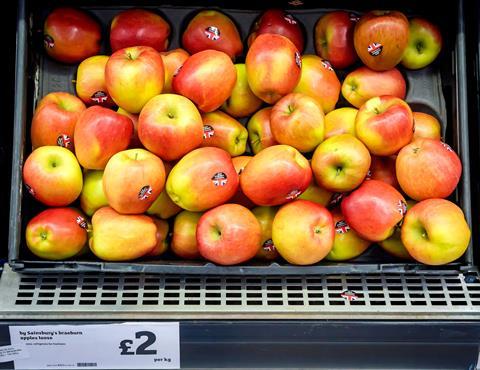
However, despite Coffey’s proclamations, the crises of the past few years, exacerbated by the war in Ukraine, have “really highlighted the fragility of our food system”, says Vicki Hird, head of sustainable farming at food and farming charity Sustain. “It’s now an extremely broken system in the way farmers get so little, take so many risks, and can’t reap the rewards.”
But while the farmers warn the long-term future of the sector is on a knife edge thanks to current practices, Batters does admit that the UK’s self-sufficiency (so far, at least) has remained pretty static at around 60% for the past two decades.
In fact, in many sectors, self-sufficiency has actually increased over the past 50 years (see chart, below) according to analysis of Defra data by farming consultancy Andersons, which puts total food and drink self-sufficiency at 61% – and 74% for indigenous food products.
This comes despite a 10% reduction in the amount of farmed land between 1973 and 2021, Andersons said in its report published last December. The chief driver behind this growth can be explained by increased efficiency and consolidation, suggests Batters. A mixed blessing, in many ways.
Efficiency has boomed thanks to new technologies and machinery. But this is typically of most help to big farms wanting to get bigger. Such consolidation has led to a serious decline in the number of farming businesses left in the UK – down by 41% since 1973 while the number of full-time farmers has fallen 33%.
While it is a common complaint that farmers have failed to see any prices rises for their goods at all in recent times, that’s not strictly true. The money paid to farming businesses on an annual basis has seen strong growth in recent years, rising by 14.4% (or £756m) from 2020 to 2021 to the third-highest level, in real terms, since 2000 (see table below), according to Defra’s Total Income from Farming (TIFF) metric.
The problem is that it’s not enough. Farmers are seeing huge cost rises on inputs – from fertiliser, feed, and energy – thanks to the war in Ukraine.
“The gap between the cost of production and the value of sales is still too wide and too variable to be sustainable”
David Horton-Fawkes, CEO at AF
Data published last autumn by farm supplies co-operative AF showed an eye-watering 34.2% increase in the average cost of farming inputs between September 2021 and 2022. Farmers were burdened with the biggest jumps on animal feed and medicine, fuel and fertiliser which saw annual year-on-year jumps of 36%, 43% and 134% respectively.
An exodus of seasonal workers has also placed a huge strain on labour markets and added numerous new costs to farmers’ balance sheets. “About £70m worth of crops went to waste last year [due to labour shortages],” Batters says.
These sometimes triple-figure inflation rates compared with an average RPI rate of 14.3% for the period. The difference led AF to warn of the huge disparity between food price inflation and aginflation, with many food producers still facing crippling costs.
Indeed its latest Aginflation Index score – which combines all its key input prices into one metric – hit 288 points last month, 63% higher than its RPI index score of 177, reflecting the (ongoing) serious gap in retail and farm input inflation.
Inflation remains particularly apparent in crop protection products and feeds containing soya – with AF noting the price of compound blended feeds used across the livestock sector had not fallen as far as markets had suggested, despite the fall in cereal commodity prices. The good news is that inflation on many agricultural inputs is now easing, albeit slightly. In the six months to the end of March, AF’s Index showed an average fall of 2.6% in the cost of inputs.
But while the dip in aginflation is “very good news”, according to AF CEO David Horton-Fawkes, “the gap between the cost of production and the value of sales is still too wide and too variable to be sustainable”, he suggests. A report, titled Unpicking Food Prices, published by Sustain in December, showed many farmers – after intermediaries and retailers took their cut – often received far less than 1% of the profit for the food they produced.
For a loaf of bread, for example, a cereal farmer may spend 9p producing the ingredients for the product. Yet they received an almost negligible profit (0.09p) on the average selling price of £1.14 in the supermarkets, the report revealed, with the report finding many more such examples across the sector.
Even where farmers do receive more money for their product, supermarkets and processors are often the main beneficiaries.
Take dairy. The category saw record farmgate milk prices in 2022, driving record retail price inflation for staples such as four pints of milk, which hit £1.70 in Waitrose in January, up 36% year on year.
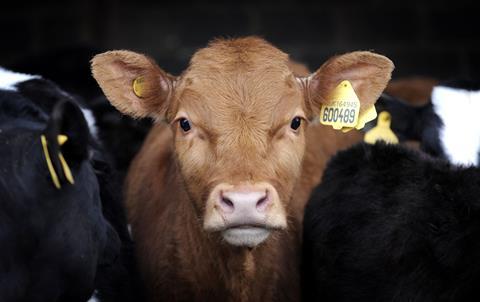
But by combining Defra’s average farmgate with ONS data (see chart, below) on the average price of milk, the mults look to have benefited from a far higher uplift than the farmers supplying them.
These types of discrepancies lay bare the inequalities in the supply chain, suggests Hird at Sustain. “It has become so efficient that nobody is making anything any more,” she suggests.
And Rabobank UK CEO Will Jennings echoes her sentiment. While he argues the food sector is “not broken” nor “on the verge of collapse”, he agrees that the focus on shareholder value and efficiency has pushed some parts of the food chain “into over-efficiency, where it has become too good in what it does”.
Chiefly, he says, this refers to the retailers who have sought to extract as much value from the supply chain as possible. But he is also keen to stress “we have to be very careful not to point the finger of blame and say one part of the food sector is more broken than the other”.
Others, however, aren’t quite so reticent. Lisa Jack, a professor of accounting at the University of Portsmouth – who co-authored Sustain’s Unpicking Food Prices report – points out that many food producers have been receiving the same low profits for over a century, mirroring the steady returns that supermarkets have coming in.
Jack argues this shows how “the model of supermarkets making a net margin of around 1%-2% is hard-wired in”, adding the lack of transparency over pricing is also a historical position of which there seems to be little appetite to change.
It’s a common theme across the board, says Ged Futter, director of consultancy The Retail Mind, who while discussing the plight of apple growers last month, told The Grocer the appetite to work collaboratively to understand the supply chain and the costs involved was “non-existent for the vast majority of retailers”.
He adds: “Growers will walk away from contracts because they can’t afford to keep supplying. So then the relationship the retailers have is to go back to a transactional relationship. That means any investment that’s needed by British growers into technology, into farming methods, just won’t happen.”
The NFU farmer confidence survey, published last week, found 88% of respondents felt the price of input costs would have a negative effect on their businesses.
“Growers will walk away from contracts because they can’t afford to keep supplying”
Ged Futter, director of consultancy at The Retail Mind
Some 82% of the 613 NFU farmer and grower members were concerned with the phasing out of the Basic Payment Scheme farm subsidy regime, while 55% were concerned with the introduction of new government support, including its controversial Environmental Land Management schemes.
Other drivers of dismay are an increasingly confrontational relationship with supermarkets, says the NFU’s Batters. And “the fear of speaking out is rife”, when it comes to pushing for improved returns.
“They are incredibly worried about being delisted, and this has not been helped by recent issues such as what Tesco did with those fulfilment charges,” she adds – pointing to the retailer’s controversial threat to review ranges unless suppliers and producers paid a new fee for online and Booker wholesale operations.
The three-year outlook for confidence on farmers is no better, down seven percentage points since the same time last year.
As the table above shows, pretty much every farming sector is feeling suitably pessimistic about what the future holds. “We are definitely seeing more people leave the industry, and the mood with growers in particular is really gloomy,” Batters says. “They are at their wit’s end… it is clear uncertainty is driving this contraction.”
Batters wants a “grown-up conversation” across the entire food sector “about what fair trade is actually going to look like, so that we can shore up the quality and quantity of supply”.
Citing the plight of the egg sector over the past year – whose crisis led to has led to almost a billion fewer eggs on the market – she warns more shortages will follow unless wholesale change occurs.
In addition to more government engagement and even legislation to improve fairness and transparency in supply chains when it comes to this issue (plus a beefed up Groceries Code Adjudicator), Batters falls back on her old call to introduce an official target that would commit the UK to hitting a certain level of self-sufficiency.
So far at least, they are calls that have fallen on deaf ears. But the record suggests this isn’t one the market will sort out for itself. Does the government have the desire to intervene? We’re about to find out.







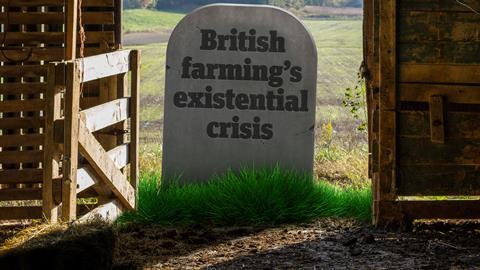
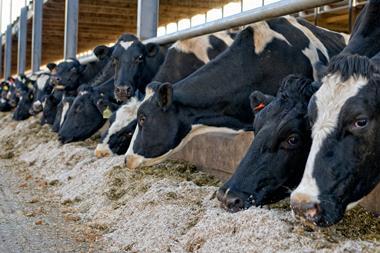


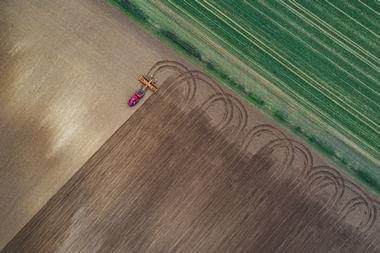
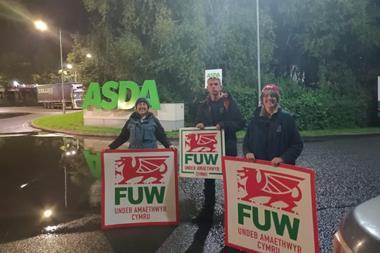
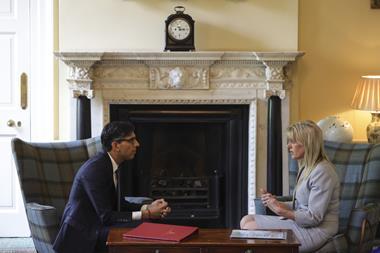






No comments yet